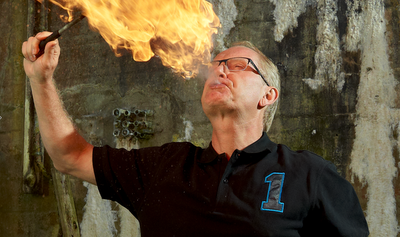I was fortunate enough to get some hands on and real world experience with the 28mm and 240mm LS lenses, the two latest pieces in the jigsaw puzzle from Phase One.
One that I knew I wanted and had been hoping they would make, the other a lens which I did not know I wanted until I used it.
In my forest series I have often used the quite brilliant 28mm F4.5 lens which is very sharp and remarkably little distortion. Importantly it gives full coverage of Phase One's biggest sensors, which is not the case with Hasselblad's offering, and played a small but significant part in my switch to Phase One a few years back.
 |
| 28 mm LS f/4.5 Aspherical |
I used it on the Zebra shoot.
I have been in many situations where my widest lens was not quite wide enough and I hankered for a 28mm.
It has very low distortion for a medium format lens of its focal length too.
For all its strengths it did have one glaring shortcoming, in my eyes at least.
It had no leaf shutter, meaning I was stuck at 125th sec with my Elinchrom Rangers and on occasion it could be very frustrating.
A few years back when I suggested they make a version with leaf shutter I have to admit they did look at me somewhat sideways in a sort of 'why on earth would you want one of those? kind of way.
Well now they have done it and it is wonderful.
What photo opportunity did Phase One come up with to demonstrate the benefits of the 28mm with a leaf shutter?
Simple.
Phase One CEO Henrik Hankonsson would put some sort of nasty flammable liquid in his mouth and breath fire, hopefully without setting himself or me on fire.
It might look like quite simple but it was a bit scary.
Its difficult to imagine another CEO of any company at all doing this for a photo and it does give you some sort of idea of the man AND the company.
Here is a 100 percent screen grab.
It was a little bit windy and the consequences of the fire blowing back into HH's face did not bear thinking about, so the location chosen for the shoot was a sheltered area in a former Danish military installation dating back to the Cold War.
It was one of those shoots where we had to get it right, I did not want to hit the headlines for all the wrong reasons...
The area was a bit on the tight side as you can see so the 28mm was just the tool for the job, the leaf shutter meant I could shoot at 500th sec with big flash.
I lit the shot with two Profo 7B's.
Key light from the left with the back light on axis, the key light with a soft box, the back light bare bulb, using the built in kill spill.
I located them both very close to the walls of the bunker to give maximum stability and safety.
I will admit this shot took a couple of attempts.
When we all climbed back into the car unscathed I breathed a BIG sigh of relief.
Time then to get some hands on with the Phase One Schneider LS 240 mm f/4.5 the longest available telephoto lens for the Phase One 645DF camera.
There has been a telephoto sized gap in the Phase lens line up and this lens was keenly awaited.
 |
240 MM LS F/4.5 IF
|
Which at first glance, a slightly curious focal length lens, I can't think of another 240mm very easily.
The boffins at Phase were particularly interested to see what I made of it for a couple of reasons.
It was designed as a 240mm as this was found to be the optimum during the design process.
The resulting performance is remarkable.
When shooting on medium format I normally don't gravitate to the telephoto view, I tend to hover around the 120mm and wider, so while interested I did not think I would be THAT interested.
A brief walk around the streets of Copenhagen had me thinking a little differently though.
This is a really super sharp lovely lens with beautiful bokeh.
Here is 100 percent screen grab.
The internal focus mechanism works a treat and though it is not the lightest of lenses, weighing in at 1.6 kg/3.53lb's hand holds very well indeed, making a very stable package with the Phase One DF.
The AF seemed very snappy too, and on the new DF+, which I have not tried yet, one would imagine it would be even better.
One of the major failings of medium format lenses of this focal length is that they do not focus close enough.
This one does.
A close focusing distance of 170cm/5ft takes it well into the realms of a creative portrait lens.
My only slight reservation is the lack of a separate tripod mount for the lens.
I did not have chance to try the lens mounted on a tripod but the engineers at Phase One assured me this was not an issue due to the balance of the camera back /combo.
Lenses of this quality and calibre don't come cheap, and while I'm unsure of the final pricing of them, but I have never bought a Phase One LS lens and regretted it.
I have placed my order for the 28mm LS and look forward to shooting some more forest shots on it soon.







